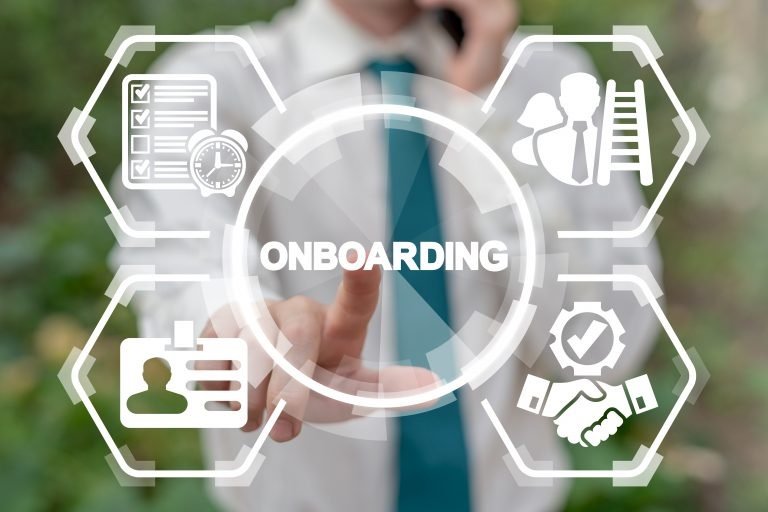New employee onboarding is crucial in setting the stage for a successful and productive work environment. A well-designed onboarding plan ensures new employees feel welcome, supported, and integrated into the company culture from day one.
In this blog post, we will explore practical strategies on how to build an onboarding plan for a new hire that will maximize engagement and accelerate the integration process.
Creating a Clear Onboarding Process
A clear and structured onboarding process is essential to ensure consistency and effectiveness. Start by clearly outlining each step of the onboarding journey, from pre-arrival preparations to post-onboarding support. Ensure you communicate these steps to all stakeholders, keeping them informed about their roles in the process. Additionally, consider developing an easy-to-follow checklist that covers all necessary tasks along with designated timeframes.
Pre-Arrival Preparations
Effective onboarding begins even before new employees arrive. Provide them with initial information regarding dress codes, parking instructions, and any required paperwork they must complete before their first day. Consider sharing relevant company policies or resources electronically so they can review them before joining.
Assign an Orientation Buddy
Assigning an orientation buddy can significantly ease the transition for new employees. The dedicated buddy serves as a mentor throughout their early days or weeks at the organization. This experienced coworker can offer guidance, answer questions informally, make introductions, and provide ongoing support during this crucial acclimation period.
Comprehensive Introduction to Company Culture
To facilitate faster integration into your company’s unique culture, introduce new hires to their immediate team and key members from other departments or teams they may collaborate with in the future. Engage team leaders to describe their team’s dynamics and demonstrate how each person’s role contributes to overall organizational success. Furthermore, facilitate opportunities for fun team-building activities or social events during the first few weeks to nurture informal working relationships.
Training and Development Opportunities
Investing in your new employees’ professional development helps them thrive in their roles while increasing their overall job satisfaction. Consider designing a tailored training program that combines classroom-style learning, hands-on activities, and access to online learning platforms. This approach not only enhances their skillset but also demonstrates your commitment to fostering their growth within the organization.
Mentorship Programs
Mentorship programs can greatly benefit new employees by connecting them with experienced colleagues. The mentors offer guidance, support, and expertise while helping the newcomers navigate the organizational landscape. When establishing a mentorship program, create guidelines for regular check-ins and encourage pairings based on shared interests or complementary skill sets.
Continuous Feedback and Evaluation
A crucial aspect of the onboarding process is providing ongoing feedback to new employees. Regular check-ins allow for addressing concerns, clarifying expectations, and providing guidance if necessary. Additionally, consider implementing a formal evaluation process after the initial onboarding period to assess engagement levels and identify areas that may need improvement in the future.
Supportive Work Environment
Ensuring a supportive work environment goes beyond the onboarding period in an age when the workplace is evolving. Foster open communication channels where new employees feel comfortable expressing their opinions or seeking assistance when needed. Encourage peer-to-peer recognition programs that celebrate achievements across teams, fostering a sense of belonging and motivating high performance from day one.
Creating a Welcoming Physical Environment
The physical environment plays a significant role in shaping the first impressions and overall experience of new employees. Pay attention to the workspace they will be occupying, ensuring it is clean, well-maintained, and equipped with all necessary tools and resources. Consider including personal touches like welcome packages or desk decorations to make them feel valued and appreciated.
Engaging Orientation Sessions
Orientation sessions are an opportunity to provide new employees with a comprehensive understanding of the company’s mission, values, and goals. Make these sessions engaging by using interactive methods such as group discussions, multimedia presentations, or hands-on activities. Incorporate testimonials from current employees who can share their experiences and insights about working in the organization.
Integration with Existing Systems
A seamless onboarding process includes integrating new hires into existing systems and processes within the company. This includes providing access to relevant software, computer systems, email accounts, shared drives, and any other essential tools needed for their daily work. Ensure that IT support is readily available during this integration to address any technical issues effectively.
Conclusion
Implementing an effective new employee onboarding plan sets the groundwork for building engaged and productive teams within organizations. From creating clear processes to assigning orientation buddies and offering comprehensive training opportunities, implementing these strategies will help expedite your new hires’ integration into the company culture while ensuring long-term success for both individuals and the organization as a whole.
